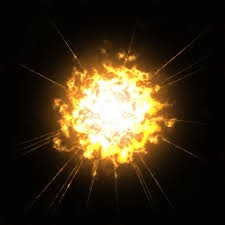Task 1.9 RENDERING PRACTICE
Preparation for rendering: Read the text / Find clue words / Make up a plan / Retell the text in your own words.
Modern theories of cosmology

Initial ideas for the Big Bang model were proposed by Gamow, Alpher, Bethe, Herman and collaborators in the 1940s in order to explain the origin of the chemical elements. They proposed that the Universe was initially very dense and hot, and that it expanded and cooled to its present state. The elements would then be synthesized during an early time when the temperature and density conditions were appropriate for nuclear reactions to occur.
Modern theories of cosmology are based on the assumption of a homogeneous and isotropic Universe, as implied by the Cosmological Principle. The geometry and evolution of the Universe can then be predicted by the theory of general relativity, with a number of cosmological parameters describing the spatial curvature and overall expansion. The Hubble parameter, H, provides a measure for the expansion rate of the Universe and its present-day value is called Hubble’s constant, H0. The mass density of baryons (more precisely, of nucleons), ρb, can be expressed relative to the critical density, ρc, by introducing the cosmological baryon density parameter, Ωb ≡ ρb/ρc. The critical density describes the borderline between a closed and an open Universe, that is, the total density at which the Universe is spatially flat, and is defined by the Friedmann equation as ρc ≡ 3H20/8πG, with G the gravitational constant. The number density of photons is expected to have been constant since the epoch of electron-positron annihilation, which occurred during a time of about 4–200 s after expansion began. The photon number density after that epoch can be found from the precise value for the present-day temperature of the cosmic microwave background radiation, T = 2.725 ± 0.001 K, and is given by nγ = 410 cm−3. Using the definitions η ≡ nb/nγ, η10 ≡ η∙1010 and h ≡ H0/100 km s−1 Mpc−1, one finds for the relationship of the parameters introduced above the expression Ωb h2 = η10/273.9.
The microwave background radiation carries a record of the conditions in the early Universe at a time of last scattering, when hydrogen and helium nuclei recombined with electrons to form neutral atoms. As a result, photons decoupled from baryons and the Universe became transparent to radiation. Any oscillations in the photonbaryon fluid around that time (about 400,000 years after the beginning of expansion) would give rise to tiny variations of temperature (on the 10−5 level) in different parts of the present microwave sky. The precise mapping of these anisotropies by NASA’s Wilkinson Microwave Anisotropy Probe (WMAP) represented a spectacular success for cosmology. The observed anisotropies are usually decomposed in terms of spherical harmonics, where each term describes the magnitude of the anisotropy on a particular angular scale. The observed features in the resulting angular power spectrum are closely related to specific cosmological parameters.
Task 1.10. Work in pairs. Make up 5 questions on the text and address them to your partner.
Task 1.11. Discuss the text with your partner.
Task 1.12. Create an infographics or a mind map based on the information you have read. Present it to the group in the classroom. You may use the websites: https://www.mindmeister.com
